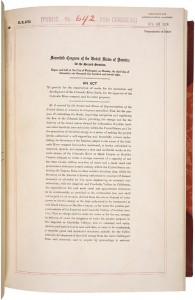Reed Benson has read the CRomnibus, the ginormous federal spending bill approved late last year as Congress was heading out the door, and helpfully digested some of the key water policy bits so the rest of us don’t have to. For the Colorado River, the bill…
allows the Bureau to “fund or participate in pilot projects to increase Colorado River System water in Lake Mead” and Upper Basin federal reservoirs “to address the effects of historic drought conditions.” This authority allows Reclamation to provide grants for certain non-federal projects, or for renewing or implementing existing “water conservation agreements.”
A couple of things of note. One is the practical – this seems to provide the necessary legal mumbo jumbo to allow system conservation efforts to proceed, or at least a part of them, at some scale (I reserve the right to revise and extend this – I need to do more reporting on the details and implications here).
Second is governance. One of the interesting questions right now is where the governance comes from as Colorado River Basin folks grapple with the institutional arrangements necessary to take the next steps in providing resilience in water management for the umpty million people and acres of ag trying to figure out how to share the river’s water in an age of scarcity.
There was a time, in the golden age of Reclamation, when the governance derived from acts of Congress. The Boulder Canyon Project Act (1928), the Colorado River Storage Project Act (1956) were examples of Congress doing Big Governance. Stuffing tiny enabling language into a massive must-pass appropriations bill is a stark reminder that governance on this stuff will not be coming from Congress. If we need new institutional arrangements, we’re going to have to build them ourselves.

